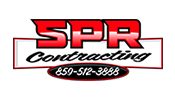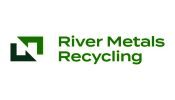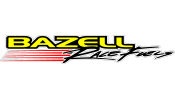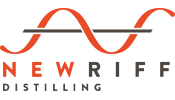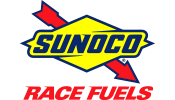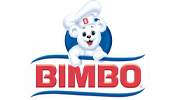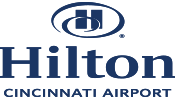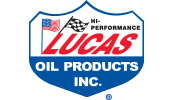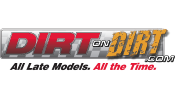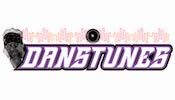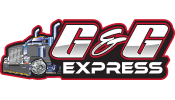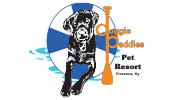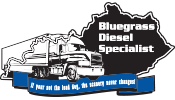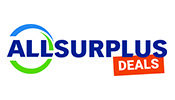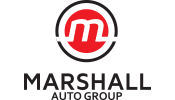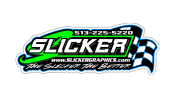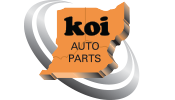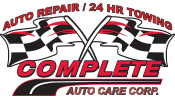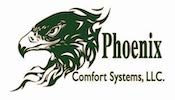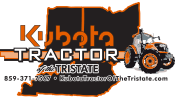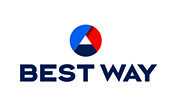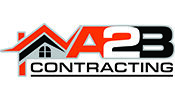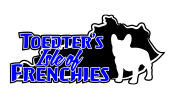Hornet Rules
Revised: 6/21/2023; Changes Highlighted in Blue
Note: These rules are subject to change at any time.
Engine
- Only three (3) or four (4) cylinder in-line engines will be permitted.
- Engine must match the make of the car being used in competition.
- Aftermarket and/or racing-type cylinder heads will not be permitted.
- High performance and/or sports car engines of any type will not be permitted.
- Turbo charged and/or super charged and/or rotary engines and/or engines utilizing a variable cam-timing system will not be permitted.
- Engines built with components from variable cam/valve timing engines are allowed as long as the variable cam/valve timing system is not active.
- Intake manifold must remain stock and unaltered for make of engine.
Electronics and Ignition System
- Only 12 volt ignition systems will be permitted
- Traction control of any-type will not be permitted.
- Batteries:
- Only one twelve (12) volt battery securely mounted will be permitted.
- The battery must be securely mounted with positive fasteners and brackets.
- The battery terminals must be insulated or enclosed with a non-conductive material that will prevent contact with any part of the race car should the battery become dislodged from the battery mount.
- If the battery is located in the driver’s compartment, it must be in a marine type case. The case must be securely mounted to the frame, either directly or by means of a steel rack. The steel rack must be constructed of minimum 1″ square tubing, and be securely welded to the frame or cage in a manner that will not allow the box or rack to move. An additional metal strap or bar must secure the marine type case to the rack or frame. All bolts must be secured through steel tubing or the frame of the car. Bolting through the body or floor pan is not sufficient.
- One (1) mandatory battery disconnect switch must be installed. The switch must be clearly labeled with off/on direction. The switch must be directly in-line with the NEGATIVE battery cable and be capable of completely disconnecting the NEGATIVE terminal of the battery from the race car. Negative or “ground” wiring connections must not be made anywhere from the battery negative terminal to the input side of the disconnect switch.
- Only stock OEM starters in the OEM location will be permitted.
- Only one aftermarket tachometer, oil pressure and water temperature gauge(s) will be permitted.
- The vehicle computer (ECU) must be mounted in a visible location providing ease of inspection.
- An electrical engine shut off switch is required. The switch must be clearly labeled and within the reach of the driver.
Exhaust System
- Headers are permitted.
- Removal of the catalytic converter, air conditioning compressor and smog pump will be permitted.
- Mufflers are required.
Engine Compartment
- The engine and radiator must be mounted in the stock OEM location for the year, make and model of the car in competition.
- Solid engine mounts and/or safety chains will be permitted.
- Accumulators and/or accusumps will not be permitted.
- Reinforcing will not be permitted with the exception of the front strut bar.
Transmission & Driveline
- The transmission and/or transaxle must remain OEM and unaltered for the year, make and model of the car in competition.
- All forward and reverse gears must be operational.
- The flywheel, flexplate, clutch and/or torque converter and/or assembly must remain unaltered and OEM of the year, make and model of the car in competition.
- Mini-type clutches and/or couplers will not be permitted.
- Transmission coolers in the driver compartment will not be permitted.
- Torque dividing final drive systems will not be permitted.
- Locked differentials of any type will not be permitted. Locking of transmission by welding of gears is allowed.
- A minimum one (1) inch inspection hole must be located in the bell housing.
- All Axle shafts must be painted white
Chassis/Frame
- All chassis and frames must remain unaltered and OEM. Any front wheel drive, compact car frame will be permitted.
- A maximum wheelbase of 107-inches will be permitted.
- The magnetic steel floor pan must remain unaltered and OEM. Any work that is done in the form of patches must be completed with magnetic steel.
Roll Cage
- Unless otherwise noted all tubing utilized in the construction of the roll cage must be 1.50-inch Outside Diameter, .095-inch thick magnetic steel tubing.
- A six-point, full perimeter cage, using 1.50-inch Outside Diameter, .095-inch thick magnetic steel tubing is required.
- The rear hoop must have bracing that crosses in an ‘X’ configuration. Rear kick up supports are required.
- A minimum 1.25-inch outside diameter cross bar is required across the top of the halo bar.
- The roll cage must be securely fastened (welding is required) utilizing a minimum of .250-inch plating to mount cage to the frame. Only magnetic steel will be permitted. Iron, galvanized pipe, fittings, square tubing, brazing and/or soldering will not be permitted.
- A minimum of three (3) door bars on the driver side and two (2) door bars on the passenger side, mounted in a horizontal manner will be required. Vertical bracing from the top-to-the-bottom of the door bars on both sides is required.
- A minimum of three (3) windshield bars and protective screen will be required in front of the driver.
- The driver compartment must be sealed completely from the track, the engine and the fuel cell. The front and rear firewalls must remain and any holes must be patched with magnetic steel.
- Mirrors will not be permitted.
- Gutting of the car will not be permitted with the exception of clearance for the roll and door bars.
- All material considered flammable including airbags must be removed.
- The interior must remain open. No decking of interior.
Weight
- Additional weight of any type will not be permitted. Any item(s) that are deemed to provide additional weight must be removed.
Fuel Cells and Fuel
- The fuel system must be complete, unaltered and OEM for the year, make and model of the car in competition.
- Only standard pump gasoline will be permitted for competition. A maximum of 93 octane. Performance additives will not be permitted.
- The gas tank/fuel cell may be mounted ahead of the rear axle with a minimum 1/8-inch shield mounted under it. The shield must be securely mounted. If the shield becomes loose or falls off the car, the car and driver will be disqualified for the entire event.
- The RECOMMENDED gas tank/fuel cell arrangement is the following:
- If the gas tank/fuel cell is mounted behind the rear axle the gas tank/fuel cell MUST be replaced with a maximum eight (8) gallon fuel cell that meets or exceeds FIA/FT3 or SFI 28.3 specifications located to the trunk area of the car. Those who choose to use this option MUST install and use the cell in accordance with the FIA/FT3 or SFI 28.3 specification, and cannot alter the cell in any way. NO OTHER TYPE OF FUEL CELL IS ALLOWED IN THIS LOCATION.
- All cells must be mounted to a 1″ x 1″(minimum) square tubing frame that is welded to frame supports. Minimum of 4 – 2″ steel straps completely around cell.
- The trunk area must have a firewall between it and the driver’s compartment that is completely sealed.
- A fuel cell vent, including cap vent, must have a check valve. If the fuel cell does not have an aircraft-type positive seal filler neck, then a flapper, spring and/or ball type filler roll-over valve is mandatory.
- External electric fuel pump wired to the ignition switch with aftermarket fuel cell will be permitted.
- All cars must be equipped with an fuel pump safety oil pressure switch.
- Cool cans will not be permitted.
- Fuel lines that pass through the driver compartment must be magnetic steel.
Body
- Any front wheel drive, compact car will be permitted for competition. Station wagons, convertibles, trucks, and/or two seat cars will not be permitted.
- The body must remain unaltered and OEM in appearance. Door panels ONLY may be reskinned with aluminum or sheet metal. The body lines of the original doors must be maintained. No flat sides.
- The inner fenders must remain unaltered and OEM. Removing of the inner fenders will not be permitted.
- The hood and trunk lid / hatchback must be positively and securely fastened.
- No holes, other than for hood pins, allowed in hood.
- All doors must be positively and securely fastened. Must be welded if possible.
- All glass, exterior lights, chrome and/or plastic trim and hood insulation must be removed.
- The dashboard may be removed.
- Front and rear bumpers must be positively and securely fastened. Welded, chained and/or cabled to the frame will be permitted.
- A front and rear tow hook easily accessible will be required.
- The OEM bumper covers must remain on the vehicle, but may be altered to allow for tow hook. Aftermarket noses are allowed, but must be modified to match original body lines.
- A maximum seven (7) inch sun visor will be permitted.
- The opera windows may be closed and/or sealed. No closing, sealing, or blocking of side windows in front of the B post. Moving window frames to change the factory sizing will result in disqualification.
Suspension
- All components and mounts must remain unaltered and OEM and must match the year, make and model of car in competition.
- Weight jacks, modifications, racing components, aftermarket or homemade traction devices will not be permitted.
- The car must remain in alignment from front-to-rear and must track straight. Rear steel allowed. Maximum one 1/8″ thick washer per bolt.
- A maximum of 5 degrees of camber will be permitted on any wheel.
- Center mounted steering will not be permitted.
- A quick release, aftermarket steering wheel will be permitted. The steering column must remain OEM and unaltered.
- Aftermarket remote reservoir power steering will not be permitted.
- All shocks and struts must remain unaltered and OEM in the OEM location.
- Spring rubbers will be permitted.
Brakes
- All brake components must be unaltered, OEM, magnetic steel and operative on all four wheels. 3 wheel braking permitted with right rear safety hub.
- Disc and/or drum brakes will be permitted and they must match the year, make and model of the vehicle in competition.
- Only OEM Master Cylinders in OEM location will be permitted.
- Brake shut off and/or valve bias adjuster(s) will not be permitted.
- Only magnetic steel brake lines will be permitted.
Wheels and Tires
- Only OEM DOT 13, 14, 15 or 16-inch passenger tires will be permitted. Racing, mud, and/or snow tires will not be permitted. Mixing of sizes is allowed.
- Alterations of any type including re-caps, softening, chemical alteration, conditioning, siping and/or grooving will not be permitted.
- All wheels must be OEM steel or aluminum wheels with a maximum width of seven (7) inches and a standard bead. Beadlock allowed on Right Front wheel only.
- Racing wheels are permitted. Maximum seven (7) inches width.
- Wheel spacers and/or bleeder valves will not be permitted.
- Wheel reinforcement is strongly recommended.
- One (1) inch Outside Diameter magnetic steel lug nuts on steel wheels are required.
SAFETY EQUIPMENT
Safety equipment specifications listed below are listed as a guide and are only a minimum standard. These minimum standards may not be sufficient enough to protect a driver from injury or death from some incidents. It is the responsibility of the driver, car owner, and crew to ensure that the safety equipment on the car is properly installed, working as intended, and is sufficient to protect the driver from any incidents that occur. This may include using safety equipment that goes above and beyond the minimum specifications and recommended equipment listed below.
- Seats:
- Full containment type seats constructed of aluminum to the general design specifications of SFI 39.2 standards are highly recommended. Design should include comprehensive head surround, shoulder and torso support system, energy impact foam, and removable head foam.
- Up fitting a current seat with bolt on kits will be permitted with a seat manufacturer produced kit and a base seat acceptable to the seat manufacturer. Components should include comprehensive head surround, shoulder and torso support system, energy impact foam. Must be installed in accordance to seat manufacturer’s instructions.
- Seats must be used as supplied and instructed by the seat manufacturer with the exception of trimming the length of the left side head surround for the purpose of egress only. If the left side head surround is trimmed to a distance that is less than the most forward surface of the drivers helmet (usually the area crossing the chin) then a left side head net meeting the SFI 37.1 must be installed with a quick release latch.
- Seats must be mounted to a seat frame that is welded to the race car frame/roll cage structure. Attaching points, angles, and materials for the seat frame and mounting of the seat to the seat frame must be in accordance to the seat manufacturer’s instructions. Must use, at minimum, 3/8″ Grade 5 or Higher Bolts to attach seat to cage.
- The seat must be mounted a minimum of 30” (inches) from the center of the rear end, measured at the bottom of the seat.
- Restraints:
- The use of a 5, 6 or 7 point driver restraint system certified to SFI Spec 16.1 or 16.5 is REQUIRED no exceptions. All driver restraint systems shall not be in excess of 3 years of age past the date of manufacture. The use of a 7 point driver restraint system is strongly recommended. All mounting points of the racing harness MUST be mounted properly in accordance with the manufacturer’s instructions, and securely mounted to the chassis with the use of grade 5 or better hardware.
- Window Nets:
- Window Nets certified to SFI Spec 27.1 are REQUIRED and must be mounted in accordance with the manufacture’s instructions and technical director’s satisfaction.
- Driver Worn Equipment:
- A helmet certified to Snell SA2010/FIA-8860, Snell SA2015/FIA-8860, SFI 31.1/2010 or SFI 31.1/2015 is REQUIRED.
- A driver suit certified to SFI Spec 3.2A/5 is REQUIRED.
- Gloves certified to SFI Spec 3.3/5 are REQUIRED.
- Socks and Shoes certified to SFI Spec 3.3 are REQUIRED.
- Head and Neck Restraint Devices/Systems are Highly Recommended
- At all times during an Event (practice, qualifying, and competition), drivers must connect their helmet to a head and neck restraint device/system certified to SFI Spec 38.1. The device/system must display a valid SFI Spec 38.1 label. The head and neck restraint device/system, when connected, must conform to the manufacturer’s mounting instructions, and must be configured, maintained and used in accordance with the manufacturer’s instructions
- Cockpit Area:
- No sharp or protruding edges in or around the cockpit, which would impede the driver’s rapid exit from the car.
- Windshield screens mandatory. Screens must be securely fastened.
- Flame retardant seat, roll bar, knee and steering pads or padding are recommended.
- Fire Suppression:
- An in-car Fire Suppression system is Highly Recommended.
- All race cars should be be equipped with a thermally deployed automatic fire suppression system. The fire suppression system will consist of a DOT approved cylinder manufactured from aluminum or steel with a capacity of ten (10) lbs. of fire extinguishing agent, steel or steel reinforced lines, and two (2) thermally activated discharge nozzles.
- All systems must meet or exceed SFI 17.1 specifications.
- Systems must be fully charged with ten (10) lbs. of DuPont FE-36, 3M NOVEC 1230, or Fire Aide and display a legible and valid SFI and manufacturer label depicting fire extinguishing agent, capacity, and certification date. Cylinders that or beyond useful certification date must be inspected, serviced and re-labeled by the manufacturer.
- Cylinders must be mounted forward of the fuel cell. Cylinders must be securely mounted to the frame/roll cage assembly. The certification label must be unobstructed and easily accessible for inspection when the mounting is complete.
- The cylinder must be connected to the nozzles with steel or steel reinforced lines.
- Two (2) thermally activated nozzles must be used. One (1) nozzle must be located directly above the fuel cell in the fuel cell area and the second nozzle must be located in the driver cockpit area.
- An optional manual override cable may be added to the system.
- Drivers under the age of 18 are REQUIRED to have a HEAD SOCK, window net, gloves, and either a neck collar or a head and neck restraint system in addition to all other required safety equipment in place.
MISCELLANEOUS
- NO two-way radios. No crew to driver radio or transmitted communications of any kind.
- NO “in-cockpit driver controlled” electronic devices of any kind permitted.
- NO computer controlled devices of any kind permitted
- NO rearview mirrors of any kind permitted.
- Raceceivers are mandatory at all times.
- Electronic scoring is used to score all laps of all races. The scoring order of the electronic scoring system will me used for all positions and all laps unless an error occurs. This will be at the judgement of race officials only.
- A Westhold style transponder is mandatory at all times.
- Transponder must be located at the rear axle tube/crossmember.
- Mounting the transponder at any other location can result in disqualification, loss of positions, or other penalties.
- Any driver without a valid driver’s license must be approved in advance by speedway officials before being allowed to compete.
RULE BOOK DISCLAIMER
The rules and/or regulations set forth herein are designed to provide for the orderly conduct of racing events and to establish minimum acceptable requirements for such events. These rules shall govern the condition of all events, and by participating in these events, all participants are deemed to have complied with these rules. No express or implied warranty of safety shall result from publications of or compliance with these rules and/or regulations. They are intended as a guide for the conduct of the sport and are in no way a guarantee against injury or death to a participant, spectator or official.
The race director shall be empowered to permit minor deviation from any of the specifications herein or impose any further restrictions that in his opinion do not alter the minimum acceptable requirements. No expressed or implied warranty of safety shall result from such altercation of specifications. Any interpretation or deviation of these rules is left to the discretion of the officials. Their decision is final.

